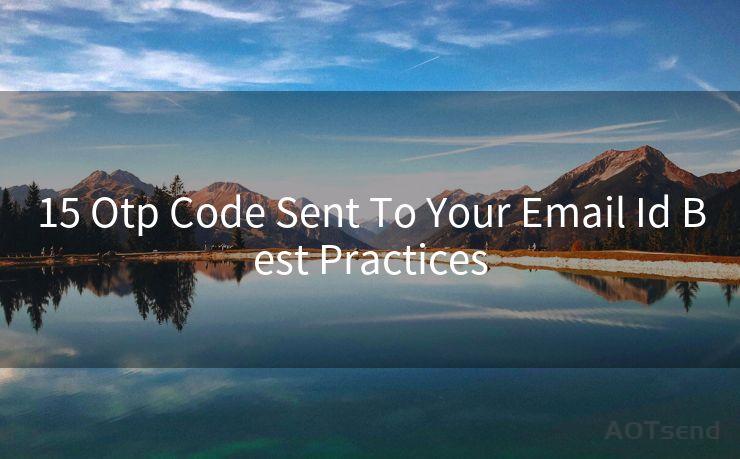15 Otp Code Sent To Your Email Id Best Practices




In the digital age, security verification has become paramount. One common method for verifying user identity online is through One-Time Passwords (OTPs) sent to email addresses. These OTPs provide an additional layer of security, ensuring that only the intended user can access sensitive information or perform critical operations. In this blog post, we'll explore the best practices for securely handling OTP codes sent to your email ID.
1. Understanding OTPs
OTPs, or One-Time Passwords, are unique codes that are valid for only a single use. They are typically sent to a user's registered email address as part of a two-factor authentication process. This adds an extra layer of security beyond the traditional username and password combination.
2. Keeping Your Email Secure
Since OTPs are often sent to email addresses, it's crucial to ensure that your email account is secure. Use a strong, unique password for your email and enable two-factor authentication if possible. Avoid accessing your email from unsecured networks, and be cautious of phishing attacks that may try to steal your credentials.
3. Verifying OTPs Promptly
When you receive an OTP, it's important to verify it promptly. OTPs are typically valid for a short period, so delaying verification may render the code invalid. Additionally, promptly verifying OTPs reduces the window of opportunity for potential attackers.

4. Avoiding Phishing Scams
Be vigilant against phishing scams that may try to mimic legitimate OTP emails. Always check the sender's email address and the content of the message for any inconsistencies. Never click on suspicious links or attachments in such emails.
5. Protecting Your Devices
Ensure that your devices, especially the ones you use to access emails, are protected with up-to-date antivirus software. This adds another layer of security, preventing malware from stealing your OTPs or other sensitive information.
6. Using Secure Connections
When accessing your email or any service that requires OTP verification, always use a secure connection (HTTPS). This ensures that your communication with the server is encrypted, reducing the risk of OTPs being intercepted by third parties.
7. Regularly Updating Your Contact Information
Keep your contact information, especially your email address, up to date with the services that send you OTPs. This ensures that you receive the codes promptly and reduces the risk of them being sent to an old or compromised email address.
8. Avoiding OTP Sharing
Never share your OTPs with anyone, even if they claim to be from technical support or customer service. OTPs are personal and should only be used by the intended recipient.
🔔🔔🔔
【AOTsend Email API】:AOTsend is a Managed Email Service for sending transactional emails. Support Email Types: reminders, authentication, confirmations, notifications, verification codes, invoices, password resets, account activations, billing statements, two-factor authentication (2FA), and one-time passwords (OTP) emails, etc. $0.28 per 1000 Emails. 99% Delivery, 98% Inbox Rate.
You might be interested in:
Why did we start the AOTsend project, Brand Story?
What is a Managed Email API, How it Works?
Best 25+ Email Marketing Platforms (Authority,Keywords&Traffic Comparison)
Best 24+ Email Marketing Service (Price, Pros&Cons Comparison)
Email APIs vs SMTP: How they Works, Any Difference?
9. Monitoring Your Accounts
Regularly monitor your accounts for any suspicious activity. If you notice any unusual behavior, such as unexplained charges or changes to your account settings, immediately contact the service provider.
10. Staying Informed
Keep yourself updated on the latest security practices and threats. This helps you stay vigilant against new scams and ensures that your OTP-based verification remains effective.
By following these best practices, you can ensure that the OTP codes sent to your email ID are used securely and effectively, providing an additional layer of protection for your online accounts and activities.




Scan the QR code to access on your mobile device.
Copyright notice: This article is published by AotSend. Reproduction requires attribution.
Article Link:https://www.mailwot.com/p3193.html



